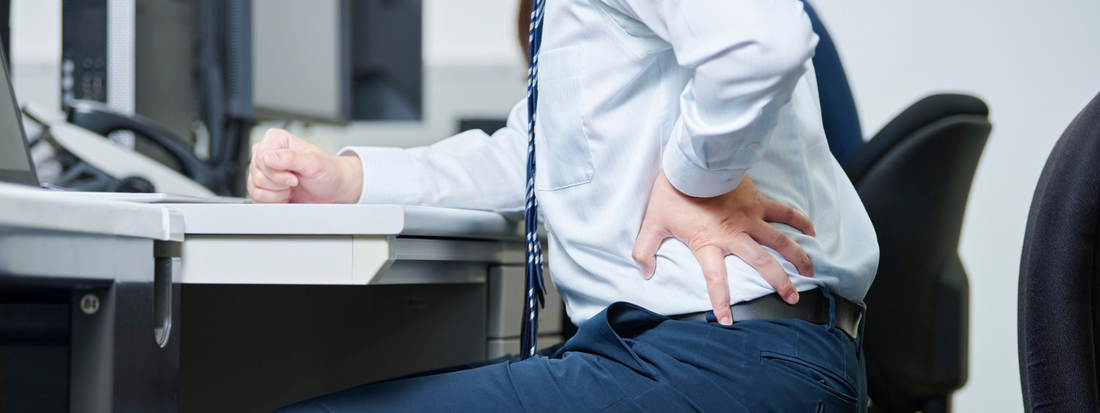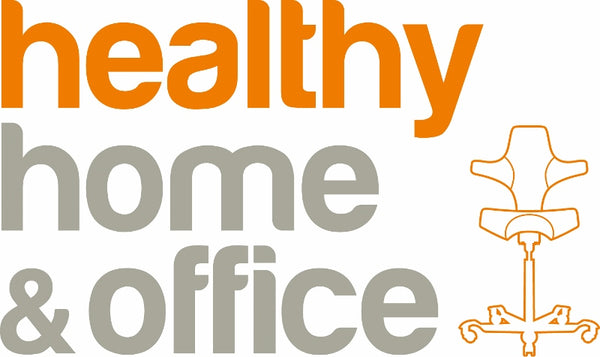
75% of Workers Are Suffering – The Truth About Work-Related Discomfort
Share
Increase in Work-Related Discomfort
Work-related discomfort is a growing concern in modern workplaces—whether in corporate offices or home working environments. It’s no secret that this discomfort is a common and often underestimated problem, yet it can have serious consequences for both individuals and businesses.
In the UK alone, it is estimated that businesses lose around 28 million working days each year due to work-related discomfort. These losses translate into significant costs and disruption for companies, along with an estimated national economic impact of over £5 billion annually.
These figures highlight just how widespread and costly poor working conditions can be—and why addressing them must be a priority for every employer and employee alike.
What is Work-Related Discomfort?
Work-related discomfort refers to physical strain, fatigue, or injury experienced due to poor working conditions—most commonly from unsuitable desks, chairs, screen positions, or posture habits. The most commonly reported symptoms include:
- Lower and upper back pain
- Neck and shoulder tension
- Headaches
- Wrist or hand discomfort
- Eye strain and visual fatigue
These symptoms often begin as mild annoyances but can escalate into chronic musculoskeletal disorders (MSDs) if left unaddressed.
What our LinkedIn Polls Revelaed
At Healthy Home & Office, we’ve been closely monitoring this issue through surveys and engagement with our community. In a recent series of LinkedIn polls, we uncovered some troubling trends:
- 57.5% of respondents have never had a DSE assessment, even though it is a legal requirement for anyone using display screen equipment (DSE) daily for an hour or more.
- 75% of respondents admitted to experiencing some form of work-related discomfort in the past two years.
These results reflect a significant lack of awareness about the importance of ergonomics and good working practices—particularly in hybrid and home office setups. Many workers simply aren’t informed about how to get the best out of their existing equipment, or even what constitutes a healthy workstation setup.
Simple Questions To Ask Yourself Or Your Team:
- Do your staff know all of the adjustments on their chairs?
- Are the desks the right height for comfortable, neutral posture?
- Are they aware of the functional and safe working areas on their desks?
- Are monitors set at the correct height and distance to avoid neck strain?
- Do your staff know about the 20/20/20 rule for reducing eye strain?
- Are they informed about basic ergonomic principles and good working habits?
If the answer to many of these questions is “no”, then your organisation could be at risk of reduced productivity, increased sick days, and long-term staff discomfort.
Why Action is Critical?
Neglecting workplace ergonomics isn’t just a comfort issue—it’s a business risk. Failing to assess and improve workstation setups could lead to:
- Decreased employee performance and focus
- Increased absenteeism due to injury or fatigue
- Higher turnover due to dissatisfaction or long-term discomfort
- Potential non-compliance with Health & Safety (DSE) legislation
But the good news is that most of these problems can be avoided or reversed with simple, informed actions.
How We Can Help?
At Healthy Home & Office, our mission is to help people create healthier, more comfortable, and more productive working setups. In many cases, all it takes is a few small changes or adjustments to make a dramatic difference.
We can guide you through:
- Identifying high-risk areas through professional assessments
- Making minor but effective tweaks to existing setups
- Recommending affordable ergonomic furniture if needed
- Supporting staff education on best practices and DSE compliance
Ready to make a change?
Whether you’re a business leader responsible for your team, or an individual working from home, now is the time to prioritise comfort, health, and productivity.
Contact us today to discuss your options and book a consultation. Let’s work together to reduce discomfort, boost wellbeing, and create a more supportive workspace—for everyone.
